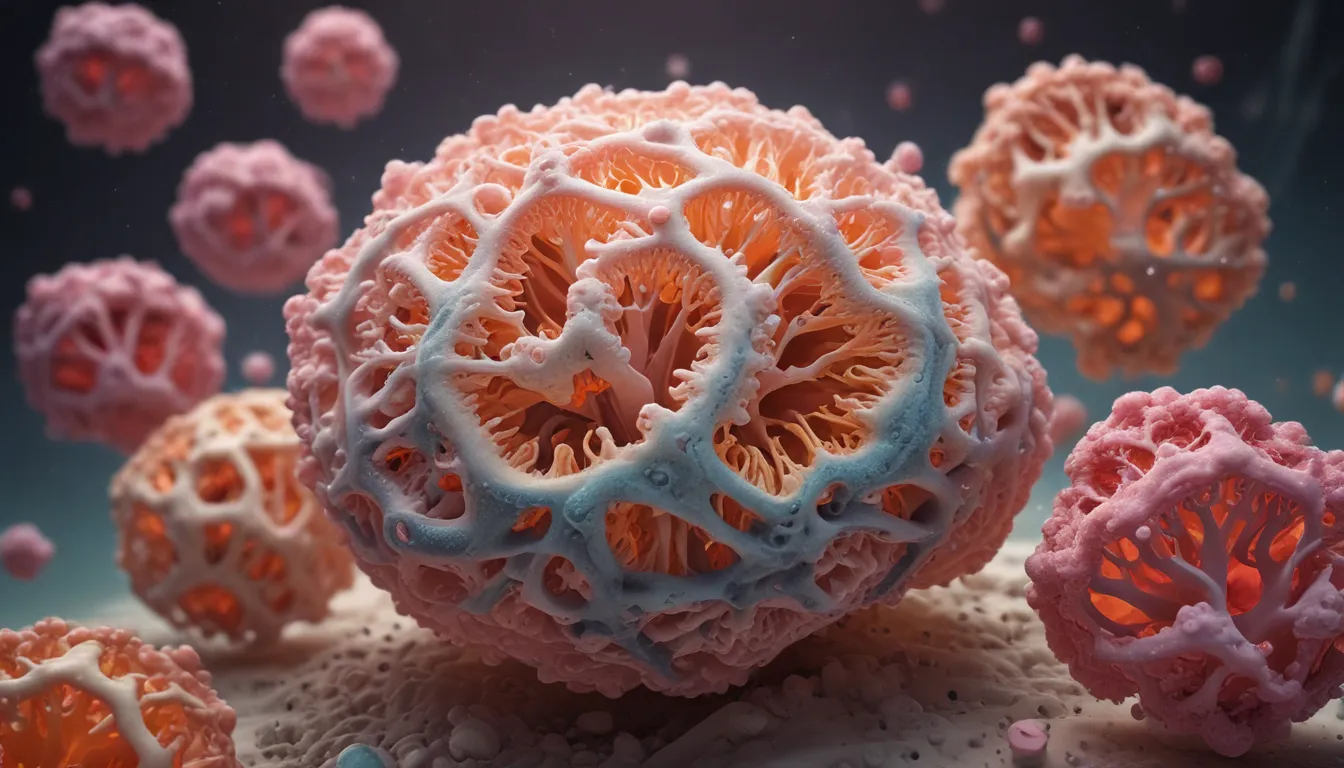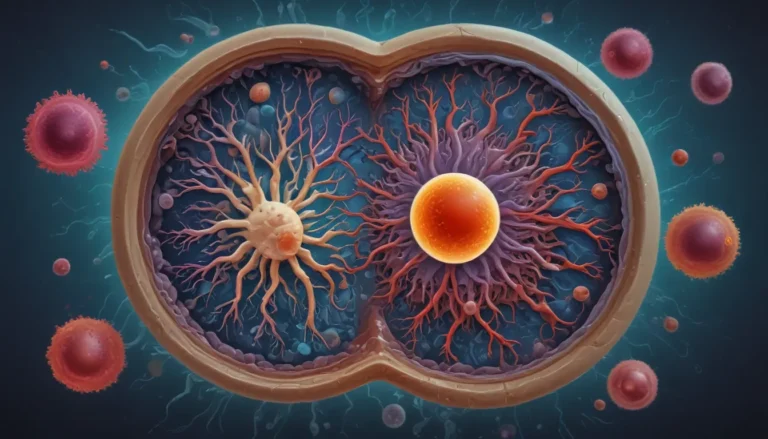A Note About Images: The images used in our articles are for illustration purposes only and may not exactly match the content. They are meant to engage readers, but the text should be relied upon for accurate information.
Organoids, the miniature versions of organs grown in labs, are taking the fields of biology and medicine by storm. These tiny structures, crafted from stem cells or tissue samples, mimic the intricate workings of real organs, offering a window into the complexities of human health and disease. With the potential to unlock the secrets of development, diseases, and drug responses, organoids are paving the way for groundbreaking scientific and medical advancements. Join us as we embark on a journey to uncover 18 extraordinary facts about organoids, shedding light on their vast potential to reshape the landscape of healthcare.
The Wonders of Organoids: A Closer Look
Organoids, like mini superheroes in the world of biology, play crucial roles in unlocking the mysteries of human biology. Stem cells, the building blocks of organoids, hold the key to creating personalized treatments, studying organ development, and even cultivating new organs for transplantation. This magical biology recipe is transforming the way we approach healthcare, offering unprecedented insights into the inner workings of the human body.
Unveiling the Secrets of Organoids
1. Stem Cell Origins
Stem cells, with their remarkable ability to differentiate into various cell types, serve as the foundation for creating organoids. These versatile cells drive the development and organization of organoids, mimicking the complexity of real organs.
2. Diverse Tissue Origins
Organoids can be derived from a spectrum of tissues, from the brain and lung to the liver, kidney, and intestines. This diversity allows researchers to delve into the nuances of specific organs, unraveling their intricacies in unprecedented detail.
3. Disease Modeling Capabilities
By introducing disease-associated mutations into organoids, researchers can replicate and study the progression of various diseases in a controlled lab environment. This unique approach offers invaluable insights into disease mechanisms and potential treatment strategies.
4. Window into Organ Development
Organoids provide a rare opportunity to witness the intricate processes involved in organ development, offering profound insights into embryogenesis and the formation of complex organ structures.
5. Drug Testing Advantages
Exposing organoids to different drugs enables researchers to assess their efficacy, toxicity, and potential side effects. This streamlined approach to drug testing holds promise for accelerating the development of safe and effective medications.
Harnessing the Potential of Organoids
6. Personalized Medicine Applications
Organoids crafted from a patient’s own cells can be utilized to tailor treatment approaches, predicting individual responses to specific drugs and paving the way for personalized medicine interventions.
7. Organ-Specific Functions
Despite their minuscule size, organoids exhibit distinctive functions characteristic of the organs they represent, such as the pumping action observed in cardiac organoids. This remarkable feat underscores their ability to mirror real organ behaviors.
8. Cancer Research Innovations
Organoids serve as a vital platform for studying the development and progression of cancer, offering researchers the opportunity to test potential therapies on patient-derived samples and explore novel treatment avenues.
9. Prolonged Lab Culturing
With proper culturing techniques, organoids can be sustained in the laboratory for extended periods, facilitating long-term experiments and observations critical for advancing scientific understanding.
10. Radiant Insights into Radiation Effects
Organoids exposed to radiation provide valuable insights into the responses and effects of various organs, offering crucial information for optimizing radiation therapy and enhancing patient outcomes.
Navigating New Frontiers with Organoids
11. Unraveling Infectious Diseases
Infecting organoids with diverse pathogens enables researchers to dissect disease mechanisms, develop new treatments, and forge pathways towards effective vaccines, bolstering our defenses against infectious illnesses.
12. Bioengineered Innovations
By incorporating blood vessel-like structures into organoids, researchers aim to cultivate more complex and functional organoids that closely resemble authentic organs, driving advancements in tissue engineering and regenerative medicine.
13. Insights into Neurodegenerative Diseases
Brain organoids offer a window into the mechanisms underpinning neurodegenerative disorders like Alzheimer’s and Parkinson’s, presenting new opportunities for developing targeted therapies and improving patient outcomes.
14. Understanding Developmental Disorders
Studying the early stages of organ development with organoids provides critical insights into the origins of developmental disorders, shedding light on potential causes and therapeutic interventions.
15. Guiding Surgical Interventions
Surgeons can harness the power of organoids to plan and rehearse intricate procedures, reducing risks and enhancing surgical precision to improve patient care outcomes.
16. Integration into Biochips
Incorporating organoids into microfluidic devices enables high-throughput screening and personalized medicine applications, revolutionizing the landscape of drug discovery and treatment strategies.
17. Advancing Regenerative Medicine
By melding stem cell technology with organoids, scientists aspire to create functional organs for transplantation, addressing the critical shortage of donor organs and offering hope for patients in need of life-saving procedures.
18. Transforming Drug Discovery
Organoids offer a more reliable and precise platform for drug screening, heralding a new era of drug discovery characterized by safer and more effective medications that meet the evolving needs of patients worldwide.
Embracing the Future with Organoids
In conclusion, organoids stand as a beacon of hope in the realm of biological research, ushering in an era of unprecedented discovery and innovation. Their capacity to illuminate organ development, mimic diseases, test drugs, and pave the way for regenerative medicine embodies the transformative potential of this cutting-edge technology. As we delve deeper into the realms of organoids, we unlock a world of possibilities that promise to revolutionize healthcare and redefine the boundaries of medical science.
FAQs: Unveiling the Mysteries of Organoids
- What are organoids?
-
Organoids are three-dimensional structures derived from stem cells that mimic the architecture and functionality of real organs, offering a valuable tool for research and medical applications.
-
How are organoids created?
-
Organoids are typically crafted by cultivating stem cells in specialized culture conditions that promote their differentiation into specific organ types, leading to the formation of complex organ-like structures.
-
What are the advantages of using organoids in research?
-
Organoids provide a superior model of human organs compared to traditional cell cultures, enabling the study of developmental disorders, facilitating drug testing, and supporting personalized medicine approaches.
-
Can organoids be used in personalized medicine?
-
Yes, organoids hold great promise in personalized medicine by enabling the testing of individual patient responses to specific drugs, guiding personalized treatment strategies tailored to each patient’s unique needs.
-
Are there ethical considerations related to organoid research?
-
While ethical considerations surround the use of certain stem cells for organoid creation, the primary goal of organoid research is to advance our understanding of human biology and improve medical treatments, guided by stringent ethical guidelines.
-
What are the future applications of organoids?
- Future applications of organoids include refining disease models, testing novel therapeutics, enhancing transplantation outcomes, and propelling advancements in regenerative medicine techniques, heralding a new era of medical breakthroughs.
As we continue to unravel the marvels of organoids, we embark on a thrilling quest to reshape the landscape of healthcare and illuminate the mysteries of human biology. The journey ahead is filled with promise and potential, guided by the transformative power of organoids in forging a path towards a brighter, healthier future. Join us on this remarkable voyage as we explore the boundless horizons of organoid research and witness the extraordinary impact it holds for the future of medicine.






